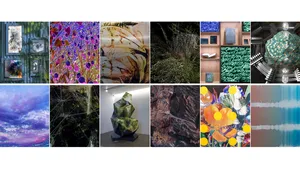100 Years of Bauhaus on Google Arts & Culture

Even if you’ve never heard of the Bauhaus movement, you’ve probably seen its influence all around you. From traffic signs to office furniture, the legendary design school changed the way our world looks and functions.
One hundred years after the movement began in Germany, we’re still surrounded by Bauhaus ideas about art, technology and craftsmanship, which are reflected in Google Arts & Culture's newest collection—"Bauhaus Everywhere". The collection came together in partnership with the Bauhaus Dessau Foundation in Germany—as part of our multi-year digitization collaboration—and six other partners including the IIT Institute of Design or the Guggenheim Museum.
Bauhaus design aimed to improve people's lives through functional design. Well-known members of the school, such as its founder Walter Gropius, the controversial Hannes Meyer or Gunta Stölzl, as one of many female designers and artists, have a lasting influence on architecture, furniture design and even typefaces.
This project digitizes over 10,000 objects, offers virtual tours of iconic buildings and exhibits over 400 artworks captured with our Art Camera. The result is over 45 online exhibitions curated by our seven partners featuring icons like the world known tubular steel armchair or imagery of “Africa's Finest Campus” and the (perhaps unexpectedly) best selling bauhaus design, wallpaper.
There are also unique insights into the everyday student life of Bauhaus including the renowned Bauhaus parties and the forward thinking empowerment of women. And, because the school’s design principles spread far beyond Germany and Europe, we’ve created a Google Earth Voyager Tour to show how people as far away as Japan, India or Brazil were inspired by Bauhaus.
The Bauhaus Study Guide: Learn what it was like to study at this very unusual school. © Stiftung Bauhaus Dessau
Explore three never-built Bauhaus buildings in Augmented Reality. Here the Rundhaus by Carl Flieger.
Zoom into a high resolution capture of Wassily Kandinsky's masterwork “Yellow. Red. Blue” and learn about his condition that made him hear colors. © Stiftung Bauhaus Dessau
Learn why the first international exhibition on Bauhaus took place in India and how the Bauhaus ideas influenced the look of Indian cities. © Johannes Schwartz, Het Nieuwe Instituut
Follow the tracks of Bauhaus internationally and see what the Dutch De Stijl movement and Bauhaus had in common. © Johannes Schwartz
New shapes, materials and approaches to construction made Bauhaus proposals stand out. Its architectural designs were especially known for their avantgarde approach. But many of these bold building plans stayed just that, and were never actually constructed. In collaboration with experts from the Bauhaus Dessau Foundation, the collection contains buildings that had only ever existed on paper and in the minds of their creators.
Together we assembled archival sketches, scribbles and vague descriptions to create augmented reality models of three visionary structures. In the Google Arts & Culture app anyone can now explore “Round House” by Carl Fieger, “BAMBOS” by Marcel Breuer and “Court House” by Eduard Ludwig from inside and outside.
László Moholy-Nagy, a teacher at the Bauhaus, put it this way: "Design is not a profession, design is an attitude." We hope you’ll see that the Bauhaus attitude is not just everywhere but, through this exhibit, also for everyone.






